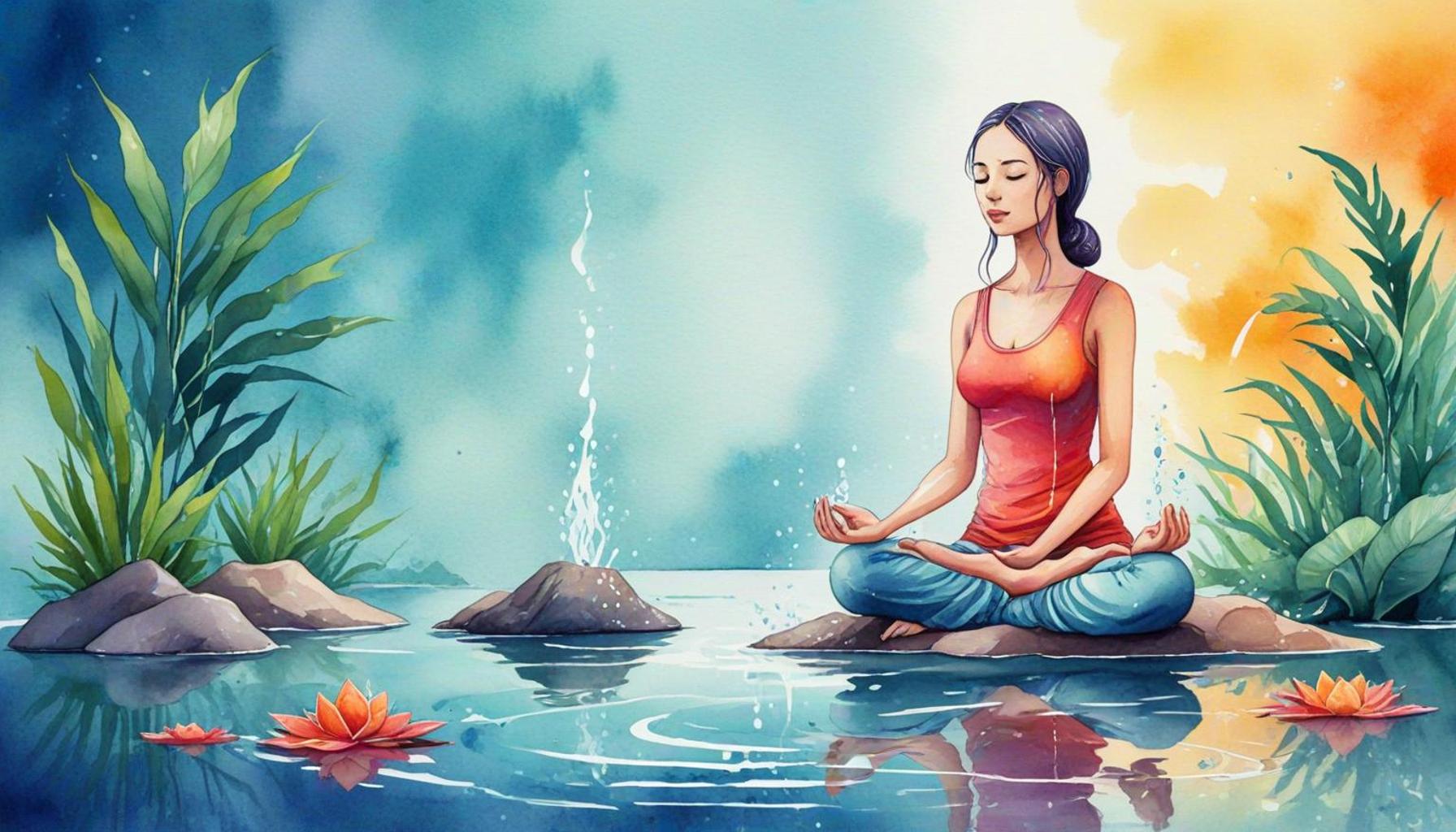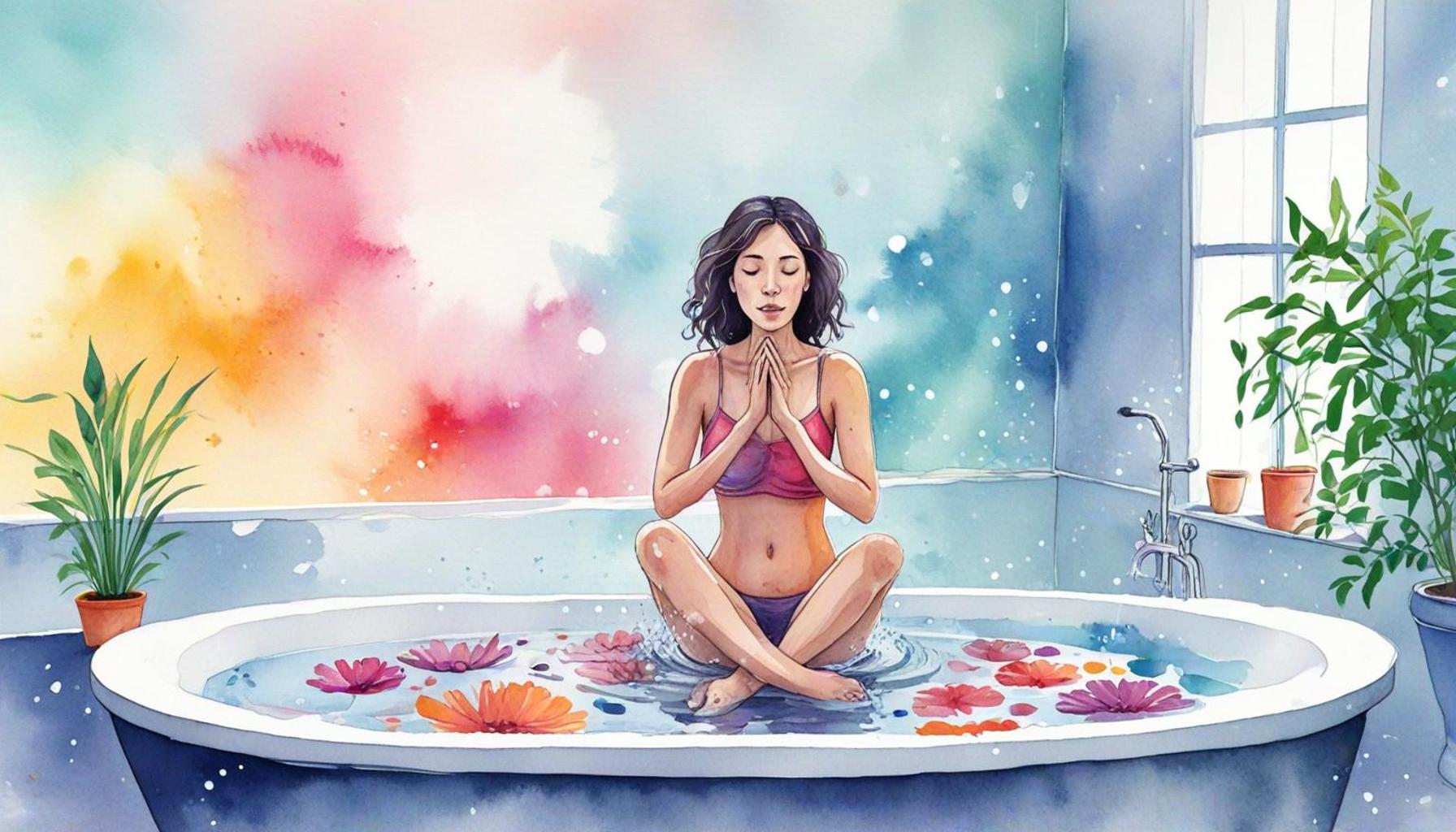How Water Temperature Can Influence Meditation and Stress Relief

How Water Temperature Influences Meditation Practices
The experience of meditation transcends mere mental exercises; it is an intricate interplay of mind, body, and environment. Among the myriad of factors that influence meditation, water temperature holds a prominent place due to its significant impact on our physical sensations and, consequently, our mental states. Understanding how different temperatures can cultivate either relaxation or stimulation is crucial for anyone looking to deepen their meditation practice and promote effective stress relief.
Benefits of Water Temperature in Meditation
- Warm Water: Warm water is often associated with comfort and safety. It relaxes the muscles, alleviates tension, and can create a serene atmosphere conducive to meditation. For example, soaking in a warm bath before meditating can prepare the body for relaxation, akin to preparing a quiet sanctuary for the mind.
- Cool Water: On the other hand, cool water can invigorate the mind, sharpening one’s focus and enhancing alertness. This is particularly useful for early morning meditation sessions when one might feel sleepy. Splashing cool water on the face or taking a refreshing shower can enliven the senses, bringing clarity and focus to the practice.
- Temperature Variability: Alternating between warm and cool water can further enhance mood. This practice can stimulate the body’s sensory receptors and foster a heightened state of awareness. Such variability can be particularly beneficial during longer meditation sessions when mental fatigue may set in.
In various cultures, including Nigeria, the role of water in meditation and wellness rituals is profound. Traditional practices often incorporate bathing rituals that utilize warm water to soothe the spirit, showcasing how cultural heritage intertwined with nature can promote mental well-being. For example, traditional Yoruba cleansing baths may involve warm, scented waters that not only cleanse the body but also create a tranquil environment, facilitating spiritual reflection and inner peace.
Exploring Personal Preferences
The quest for self-knowledge extends to understanding one’s preferences regarding water temperature during meditation. Many individuals may discover a natural affinity for hot, warm, or cold water, shaped both by personal comfort and natural inclinations. This experimentation could reveal insights into one’s meditational effectiveness. A warm bath might suit someone seeking relaxation, while another might prefer a brisk dip in cool water to awaken their senses.
Such tailored experiences with water temperature offer profound benefits that extend beyond meditation. By integrating these practices into daily routines, individuals can cultivate not only mindfulness but also a deeper awareness of how their physical environment affects their mental landscape. As you explore the various ways that water temperature can assist you on your journey toward inner peace, take the time to reflect on how each shift in temperature resonates within your mind and body.
CHECK OUT: Click here to explore more
The Effects of Water Temperature on Meditation Practice
To truly understand how water temperature can influence meditation and stress relief, it is essential to consider the physiological and psychological responses elicited by different temperatures. Research in wellness and holistic health suggests that our bodies react uniquely to cold and warm environments, and this response can enhance or hinder our meditation experience.
Warm Water: A Gateway to Relaxation
Warm water has long been recognized for its soothing properties. Studies suggest that immersion in warm water can lead to a decrease in heart rates and muscle relaxation, providing a serene backdrop for meditation. This temperature promotes the release of endorphins, the body’s natural feel-good hormones, which can significantly alleviate stress and anxiety levels. In Nigeria, for example, traditional home remedies often include warm herbal baths that not only ease physical discomfort but are also believed to enhance overall wellness. Taking the time to enjoy a warm bath infused with calming scents such as lavender or eucalyptus can create a sensory-rich environment, fostering an ideal setting for meditation.
Cool Water: Invigoration and Clarity
In contrast, cool water acts as a natural stimulant. This temperature is particularly effective for those who find themselves sluggish during meditation sessions. Studies on cognitive performance suggest that exposure to cool environments can improve focus and alertness. For individuals rising early in the morning for their practice, a refreshing splash of cool water on the face or a brief cool shower can awaken the senses, setting a vibrant tone for meditation. In the Nigerian context, the use of cool water, such as during morning rituals at local rivers, demonstrates how natural elements can awaken spiritual and mental clarity.
Utilizing Temperature Variability
The dynamic between warm and cool water creates opportunities to explore temperature variability in meditation practices. Alternating between warm and cool applications can stimulate the body’s sensory receptors, creating a cycle of relaxation and revitalization. This practice may help sustain energy and focus during extended meditation sessions. Recognizing the body’s response to these variations allows practitioners to thoughtfully engineer their meditation experiences for maximum benefit.
- Enhancing Rituals: Incorporating water temperature variations can transform simple rituals into restorative practices.
- Emotional Connection: Exploring personal preferences related to temperature can lead to a deeper emotional connection with meditation.
- Mindful Transitions: Using temperature changes as transitions within the practice can heighten awareness and presence.
As you delve into the effects of water temperature on meditation and stress relief, take a moment to reflect on your own bodily sensations. How does warm water affect your mood as you prepare for meditation? How does cool water invigorate your senses? These explorations can unlock new dimensions of your mindfulness journey and contribute to a more personalized meditation experience.
Exploring the Effects of Water Temperature on Stress Reduction
When delving into the relationship between water temperature and its impact on meditation and stress relief, one must consider the physiological and psychological effects that varying temperatures can trigger in the body. Warm water has long been associated with relaxation, as it helps to dilate blood vessels, promote circulation, and ease tension in muscles. This physiological response is crucial when one is seeking to enter a meditative state, as relaxation is fundamental to achieving mindfulness. Conversely, cold water has been shown to invigorate the senses, producing a rush of adrenaline that can paradoxically aid in achieving clarity during meditation. A quick dip in cold water can act as a reset button for the nervous system, igniting the body’s fight-or-flight response and subsequently transitioning into a state of heightened awareness and focus. This can lead to a more profound experience during meditation sessions, allowing individuals to explore deeper dimensions of their thoughts and feelings. The selection of water temperature can be manipulated according to personal preference, as different individuals may respond better to different conditions. For example, a study published in the journal “Health and Wellbeing” suggests that individuals who prefer warm environments tend to experience lower anxiety levels during meditation, while those who thrive in cooler settings often report increased mental clarity and alertness. To truly harness the benefits of water temperature in meditation practice, experimentation with both warm and cold settings is encouraged. Techniques such as warm baths or hot tub sessions can be integrated into a regular practice to promote relaxation rituals. In contrast, cold showers or ice baths can be explored for those seeking an energizing effect that complements their meditative experiences. Continuing to explore and understand the scientific principles behind water temperature can unveil new strategies for individuals aiming to enhance their meditation practices and achieve profound levels of stress relief. By tailoring their experiences to their unique preferences, they may find a pathway to deeper relaxation and clarity that suits their individual journey.
| Advantage | Description |
|---|---|
| Warm Water Therapy | Induces relaxation and muscle relief, setting the stage for deeper meditation. |
| Cold Water Invigoration | Energizes the body and promotes alertness, enhancing mental clarity during meditation. |
In this way, water temperature can not only enhance personal well-being but also offer new dimensions within the realms of meditation and stress management.
ADDITIONAL INSIGHTS: Expand your understanding here
Creating a Personalized Meditation Experience with Water
As we navigate the intersection between water temperature and meditation, it becomes essential to recognize the concept of the personalized meditation experience. Individual responses to temperature vary greatly, influenced not only by personal preference but also by cultural backgrounds and practices. In Nigeria, for instance, the use of water in various cultural and spiritual ceremonies offers profound insights into how temperature can impact the meditative state.
Historical and Cultural Significance of Water in Nigeria
Water has traditionally held great significance in Nigerian culture, often associated with purification and renewal. Rituals that involve water, such as those performed by the Igbo people at the onset of the new yam festival, frequently highlight the importance of maintaining balance. The cool water of streams provides a refreshing aspect to these ceremonies, often accompanied by prayers for clarity and focus. Such practices suggest a natural inclination toward recognizing the benefits of water temperature as a facilitator of both physical and mental well-being.
Combining Elements of Nature
Another fascinating aspect of utilizing water in meditation lies in its potential to combine with other natural elements, such as sound and scent. For instance, meditating by a gently flowing river or waterfall not only exposes practitioners to cool water but also the soothing sounds of nature—a combination that can significantly enhance the meditation experience. The rhythmic flow of water can synchronize with breath, creating a meditative rhythm that cultivates deep relaxation. This practice aligns beautifully with the meditative techniques found in traditional Nigerian music, where the natural sounds of the environment interact harmoniously with the influx of sensory experiences.
Scientific Evidence and Wellness Practices
Scientific inquiry into the physiological impact of temperature on mental states supports the ancient practices of water rituals. Emerging studies in psychophysiology indicate that exposure to both warm and cool water can lead to alterations in brain activity, affecting emotional regulation and stress response. Investigations reveal that warm water can trigger a parasympathetic response, promoting calmness, while cool water activates the body’s sympathetic system, facilitating alertness and focus. This indicates that understanding how water temperature influences meditation can be an important strategy for individuals seeking tailored methods for stress relief.
Practical Applications for Daily Routines
Incorporating these insights into everyday routines can be a transformative experience for those looking to enhance their meditation practices. Here are some practical tips:
- Morning Rituals: Begin your day with a refreshing splash of cooler water on your face or a brisk shower to awaken the senses.
- Evening Calming Sessions: Create relaxation sessions with warm water, perhaps through long baths or warm foot soaks, combined with calming herbal teas or essential oils.
- Incorporating Nature: Find a natural body of water nearby to meditate, immerse yourself in the moment, and calibrate your emotional state.
Through these explorations of water temperature, practitioners can better navigate their unique pathways to meditation and stress relief, fostering a deeper understanding of how to harmonize body and mind. As we continue to explore the synergy of these elements, possibilities for personal growth and healing appear limitless.
SEE ALSO: Click here to read another article
Conclusion: Embracing the Power of Water in Meditation
As we delve into the profound influence of water temperature on meditation and stress relief, it becomes clear that the journey towards inner peace and balance is deeply personal and varied. From the refreshing coolness of a morning splash to the comforting warmth of an evening soak, water offers a versatile tool in crafting personalized meditative experiences. The historical and cultural significance of water in Nigeria—where it is revered for its purifying properties and vital role in spiritual practices—further emphasizes its potential to enhance mental clarity and emotional stability.
Moreover, the synergy of nature’s elements cannot be overlooked. Incorporating the sounds of flowing water and the invigorating scents of natural surroundings can deepen relaxation, creating an immersive environment that heightens the benefits of meditation. This holistic approach aligns with scientific findings that support the physiological effects of different water temperatures on the body, revealing how warm water promotes calmness while cooler water awakens alertness. These insights pave the way for individuals to tailor their meditation techniques based not only on personal preferences but also on the innate responses to environmental conditions.
In essence, by understanding and harnessing the influence of water temperature, we open doors to new possibilities in our pursuit of stress relief and self-discovery. As we continue to explore these connections, let us embrace the diverse practices and rituals that honor water’s role in meditation, integrating them into our daily lives to foster deeper emotional resilience and overall well-being. Ultimately, the path to harmony and tranquility is a fluid journey—one that can be shaped by the simple yet powerful elements of nature.



